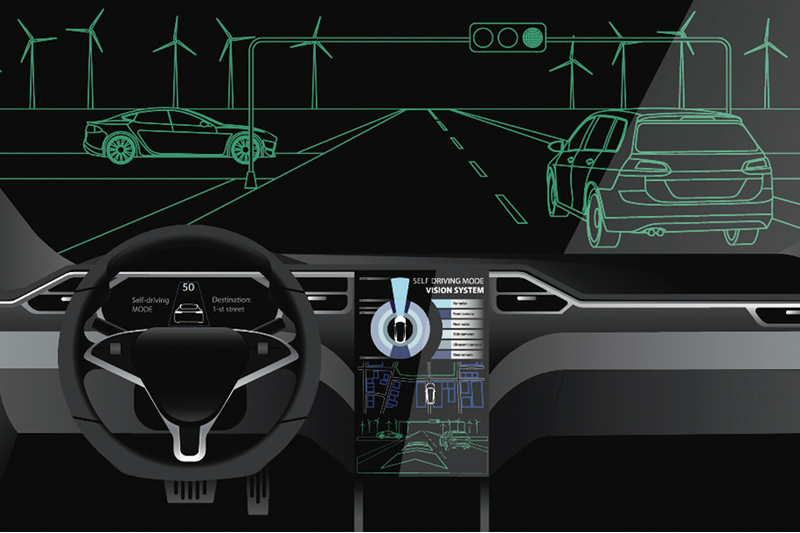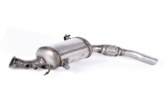
PMF spoke to KYB’s Pedro Armendariz, Deputy Director of the company’s Engineering Department, about the technology that is being implemented into KYB’s research and development strategy.
With over 100 years of hydraulic expertise comes a vast array of knowledge and experience. This includes physical evaluation of ride comfort and characteristics from skilled drivers, technology to predict vehicle behaviour through computer simulations, statistics- based analysis, and more. Now, KYB is using next-generation artificial intelligence to quicken and improve its analysis of the huge amounts of data it gathers during product development, testing and manufacturing. Let’s find out more.
Q. How is KYB using AI technology for underlying shock absorber technology development?
Pedro Armendariz (PA): In the field of technology, it is important to sort a huge amount of data and change it to information with technical meaning. To do this, KYB’s Digital Transformation Improvement Department is constructing an IT platform that uses cloud technology to swiftly, safely and economically collect, analyse and visualise huge amounts of data. We are using AI technology as the core of the platform.
AI is not a magic technology where if we input the data, the user’s required information will come out. AI’s strong point is efficiently and accurately extracting traits from huge amounts of data. Therefore, it is necessary to select the data to input using KYB’s experience and expertise. We have learnt to understand the points that require attention in shock absorber stroke volume at rotation direction switchover time, and the high frequency area of spring compression/expansion during acceleration. From these points, we can use AI to extract the respective features found in steering with ‘turning vehicle data’, and road grip with ‘running over uneven surface data’.
Q. Please tell us about KYB’s ProSmooth and hydraulic fluid additive adjustment technology.
PA: Our team performed driving experiments with up to 600 different combinations of oil and components to gather huge amounts of data, alongside the evaluation reports of our skilled testing engineers. We prepared shock absorber hydraulic fluid and sliding parts with different characteristics, exchanging components a huge number of times, and physically evaluated vehicles in response to customer tastes and requirements.
The difference between the physical evaluation and actual vehicle behaviour was analysed to determine the relationship between bench test evaluations, individual component evaluations, and element evaluations. We determined the main cause of frictional characteristics that influence ride feel, which led the way for the launch of KYB Prosmooth. Internal shock absorber friction is controlled by using newly developed materials for sliding parts, and variable hydraulic fluid additive adjustment technology. This product delivers both a luxurious ride and superb cornering.
The improved ride, road feel and traction combination was originally used by the KYB Motorsports Department, where it raised performance of the racing shock absorbers. The introduction of KYB’s AI technology will mean we can test even more, gathering and analysing more data points quicker and more accurately. This will give our engineers the insight to improve this cutting-edge product even more.

Q. What future trends is KYB seeing from vehicle manufacturers?
PA: The huge numbers of SUVs, as well as the rise of autonomous driving and electric vehicles, are pushing vehicle manufacturers to change what they think about shock absorbers. For many vehicle manufacturers, comfort is now becoming the priority. In addition to this, weight reduction is not as important as it was some years ago, due to increased vehicle efficiency and the number of vehicles that are now either fully electric or equipped with hybrid technology. For electric vehicles, suspension size is also a factor, due to the size and position of the batteries, as seen in the recent collaboration between KYB and REE to create in-wheel suspension.
For the more basic vehicle segment, we can foresee the implementation of passive additional systems, such as ADC (frequency dependent systems) and hydraulic stops (progressive hydraulic cushions). For medium segments, the trend would be to use variable damping in simple configurations, and for higher segment systems, like KYB Intelligent Damping Control, we are seeing trends of one valve or two valves (top segments) combined with road scanning technology, as seen on KYB’s recent OE development with Lexus, Toyota and PSA.
The next step is active suspension, although mass implementation of this technology is not imminent. This active suspension provides many different functions, including vibration control, posture control that reduces body roll, dive and squat, steering characteristics control, and body height control for maximum aerodynamic efficiency.







